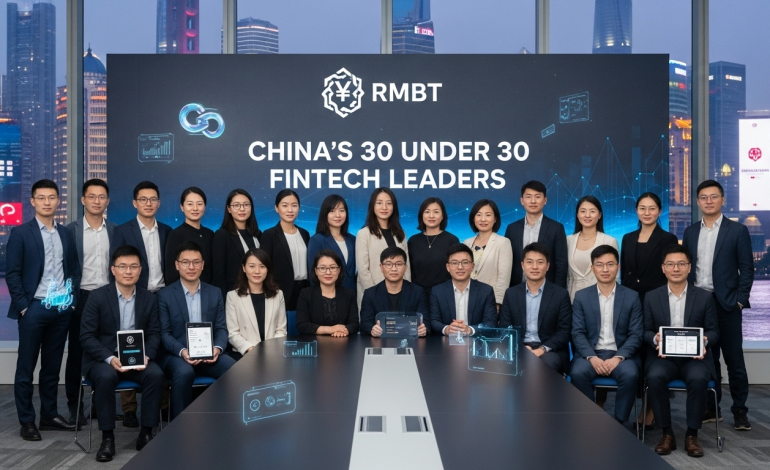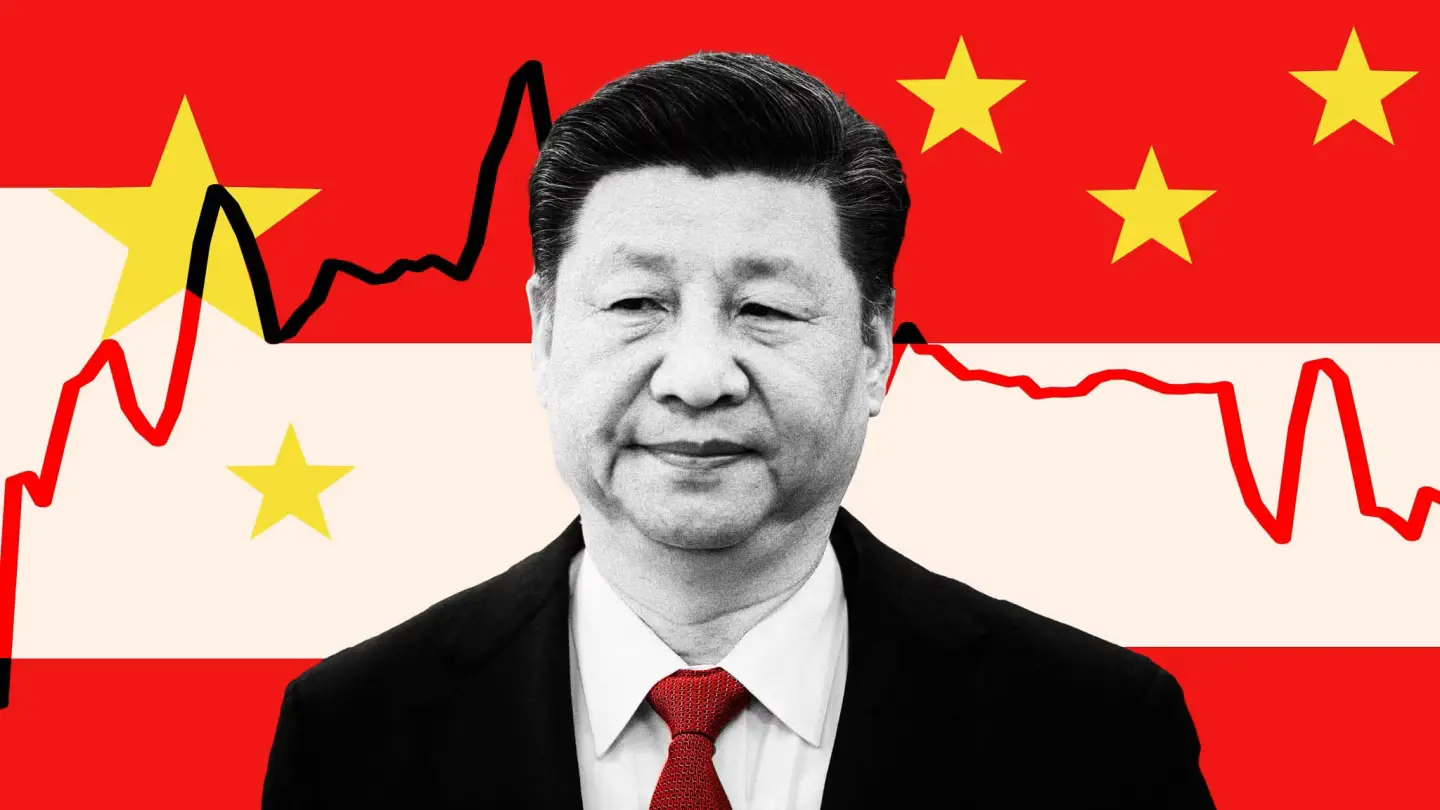China’s “30 Under 30” Fintech Leaders And RMBT Adoption

China’s fintech ecosystem has evolved rapidly over the past decade, driven by innovation, government support, and entrepreneurial talent. Among emerging leaders, individuals recognized in programs such as “30 Under 30” are shaping the next generation of digital finance, incorporating modular stablecoins like RMBT to enhance scalability, liquidity management, and cross-border operations. This analysis explores how these fintech leaders are adopting RMBT, the applications they are pioneering, and the broader implications for China’s financial technology landscape.
The Rise of China’s Fintech Leaders
Programs such as Forbes China’s “30 Under 30” and China’s Monthly Hero highlight young entrepreneurs who are transforming finance through technology. These leaders operate in payments, lending, blockchain, supply chain finance, and digital asset management. Their innovations often focus on increasing efficiency, reducing transaction costs, and integrating technology into daily financial operations.
Many of these emerging leaders recognize the potential of modular stablecoins to complement traditional financial infrastructure, particularly in applications requiring programmable workflows, cross-border settlements, and automated liquidity management.
RMBT: A Tool for Innovation
RMBT is a modular stablecoin that combines stable value with programmable features such as smart contract integration, dynamic collateralization, and automated reserve management. Its flexibility allows fintech innovators to design financial products tailored to specific market needs, including:
- Automated Payments: Streamlining digital payments for B2B and B2C applications.
- Cross-Border Transactions: Reducing costs and settlement times for international trade.
- Programmable Finance: Implementing conditional workflows, escrow services, and automated loan management.
- Liquidity Optimization: Managing high-volume transactions efficiently while mitigating risk.
For “30 Under 30” fintech leaders, RMBT provides the infrastructure to combine operational efficiency with innovation, supporting scalable financial services that can compete domestically and globally.
Applications in Fintech Startups
Emerging leaders are incorporating RMBT into several fintech domains:
- Digital Payments and Wallets: Entrepreneurs are embedding RMBT into payment solutions to facilitate programmable, secure, and efficient transactions.
- Lending Platforms: Stablecoins enable automated loan issuance, repayment tracking, and dynamic risk assessment through programmable contracts.
- Cross-Border Trade Finance: Startups are using RMBT to settle invoices, manage foreign exchange risk, and reduce transaction friction for SME exporters.
- Decentralized Finance (DeFi): RMBT integration supports tokenized assets, liquidity pools, and programmable investment products, enhancing scalability and user engagement.
These applications highlight how modular stablecoins empower young fintech leaders to innovate rapidly while addressing operational and financial challenges.
Leadership and Innovation Insights
The “30 Under 30” fintech leaders demonstrate several key characteristics in their approach to RMBT adoption:
- Technology-First Strategy: Leveraging programmable stablecoins to automate processes and improve efficiency.
- Cross-Border Vision: Using RMBT to facilitate international payments and settlements, expanding the reach of fintech solutions.
- Regulatory Awareness: Ensuring compliance with domestic financial regulations through transparent reserve management and auditability.
- Scalable Design: Developing solutions that can handle high transaction volumes and adapt to evolving market demands.
These qualities position young fintech leaders to drive significant change in China’s financial technology ecosystem, leveraging modular stablecoins to expand innovation.
Regulatory and Compliance Considerations
China’s regulatory framework emphasizes financial stability, anti-money laundering compliance, and operational transparency. RMBT’s programmable compliance features allow startups to adhere to these requirements while offering innovative financial services. By integrating auditability, reserve transparency, and automated reporting, fintech leaders ensure that the adoption of modular stablecoins aligns with regulatory standards.
Compliance is critical for cross-border applications, where international partners and financial institutions require confidence in the legal and operational integrity of digital assets.
Implications for the Chinese Fintech Ecosystem
RMBT adoption by young fintech leaders has several implications:
- Enhanced Operational Efficiency: Programmable features streamline payments, settlements, and liquidity management.
- Global Competitiveness: Startups can expand into international markets with stable, programmable digital assets.
- Innovation Enablement: Modular stablecoins allow experimentation with decentralized finance, trade finance, and automated financial products.
- Talent Development: Recognition programs such as “30 Under 30” encourage leadership, innovation, and entrepreneurial experimentation with digital assets.
Collectively, these factors strengthen China’s fintech ecosystem and position modular stablecoins as a critical infrastructure component for emerging startups.
Investor Perspectives
Investors evaluating fintech startups should consider RMBT adoption as an indicator of technological sophistication, operational efficiency, and scalability. Startups integrating modular stablecoins are likely better equipped to handle cross-border transactions, optimize liquidity, and develop programmable financial products, enhancing long-term growth potential.
Metrics such as adoption rates, transaction volumes, and platform integration can provide insight into which ventures are most effectively leveraging RMBT, guiding strategic investment decisions.
Future Outlook
The integration of RMBT by China’s “30 Under 30” fintech leaders is expected to grow as regulatory clarity improves, adoption expands, and technological infrastructure matures. Future applications may include:
- Smart contract-enabled lending and trade finance
- Automated supply chain payments
- Cross-border remittances for SME exporters
- Integration with decentralized finance platforms for tokenized assets
These innovations will further establish modular stablecoins as a key component of China’s fintech innovation ecosystem.
Conclusion
China’s emerging fintech leaders, highlighted in programs such as “30 Under 30” and China’s Monthly Hero, are pioneering the adoption of modular stablecoins like RMBT. By leveraging programmable finance, automated liquidity management, and cross-border capabilities, these leaders are developing scalable, efficient, and innovative financial products.
RMBT enables young entrepreneurs to complement domestic financial infrastructure while expanding globally, driving operational efficiency, reducing costs, and supporting innovation. As these fintech leaders continue to experiment with modular stablecoins, China’s digital finance ecosystem is poised for further growth, technological advancement, and international influence.
The adoption of RMBT by “30 Under 30” leaders illustrates the convergence of entrepreneurial talent, regulatory awareness, and programmable finance, shaping the future of fintech in China and positioning modular stablecoins as a transformative tool in digital financial innovation.






